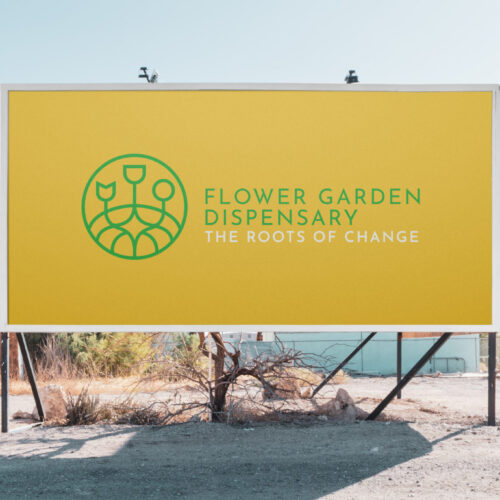
In 2023, New York State’s adult-use recreational cannabis industry is just beginning to put down roots. The state’s first recreational dispensaries opened in December, and many more are opening up in the Big Apple and beyond.
To start, build, and grow a canna-business in such an untested environment requires a strong entrepreneurial spirit, flexibility, and attention to detail! But with the right team of experts and careful planning, your business can stand out from competitors and thrive.
Adversity inspires ingenuity and innovation!
Here are a few of our tips
01.
IDENTIFY YOUR STORY
What makes you different? What makes your product unique and sets it apart from the rest?
People connect with stories; it’s one of the most fundamental aspects of human nature. It’s how we relate to each other – and it’s how you will get your audience to care about your company.
Are you a third-generation organic farmer branching into growing cannabis for the first time? A clan of close-knit friends dedicated to delivering high-quality cannabis at a low cost? A one-woman wonder who wants to help alleviate the chronic pain of other middle-aged women?
It’s never too early to start thinking about this; in fact, your whole brand should be built around this idea.
02.
EMPHASIZE AUTHENTICITY
More than ever, consumers are using their buying power purposefully to support companies whose values align with their own.
Whether you’re committed to sustainability, social justice, LGBTQ+ rights, or something else, you have an opportunity to connect with customers in a way that’s deeper than the surface level.
But don’t try to be something you’re not! Maintaining your credibility is absolutely essential, and much easier to do when starting from a place of truth.
Especially in a still-developing industry, building trust with consumers of your product is incredibly important. And being transparent about your products and your process goes a long way toward that goal.
03.
BE INFORMATIVE
From warnings about gluten content to where ingredients are sourced from, more and more people want to know what goes into the products they’re enjoying. It’s vital to make information on packaging and marketing materials easy to read and understand.
Brand story. Differentiators. Legal disclaimers. Lab results. With so much information to share, how can you possibly fit it all on a label?
You don’t! Instead, you should provide retail employees with plenty of product-specific information and make it easy to access further information online (such as through a QR code).
For your own benefit (and that of regulators), start with your state’s legal cannabis labeling standards and expand out from there.


04.
BUILD BRAND LOYALTY
A common mistake many fledgling companies make is to think that everyone and anyone should be their target audience: Every new face is another opportunity. Every set of eyes on your product is a chance to make a sale.
But this view is neither realistic nor helpful.
Think of it like this: the crowd who define themselves as “stoners” is not the same as the one that uses cannabis to alleviate arthritic symptoms. While they might use the same base plant, these two consumers probably won’t find the same brand personality appealing.
Remember, you want to build a relationship, not just make sales. To survive, your business must focus on building brand loyalty, which you can do in any number of ways.
05.
GET CREATIVE
From warnings about gluten content to where ingredients are sourced from, more and more people want to know what goes into the products they’re enjoying. It’s vital to make information on packaging and marketing materials easy to read and understand.
If you’re having trouble honing in on the right audience, working with a marketing agency could help you identify which areas of the market to corner.
They can also help with non-traditional promotion.
For instance, content influencers are a great way to identify and reach specific audiences and share information.
You can also aim to become a thought leader in your market by providing content to publications like Medium, or sharing your knowledge through podcasts or educational courses. Providing useful information can help break down stereotypes and attract new audiences.


06.
PLAN FOR SUSTAINABILITY
In the cannabis industry, single-use plastics are common. Even relatively simple changes like cardboard and paper packaging instead of plastic can make a big impact on how consumers view your business.
(Respondents to this study revealed a preference for paper and cardboard packaging: not only is it seen as less wasteful and easier to recycle, but products packaged in paper or cardboard are viewed as more high-quality, artisanal, or hand-crafted.)
States like New York require cannabis businesses to submit a sustainability program plan as part of their application, which can be a source of strength!
Future marketing efforts can be centered around your company’s sustainability and commitment to zero waste, which can help you connect with customers and separate yourself from the competition.
07.
FOLLOW LEGAL GUIDELINES
It’s easy to get carried away by fun design trends, interesting packaging, and other differentiators that can help represent your newly fleshed-out brand.
As such an iconic visual representation of the brand, packaging tends to be the aspect business owners focus on. It’s what potential customers often see first when encountering a new brand or product.
But like a book, it’s important to understand that while the design might grab someone’s attention, the rest of the experience needs to hold up to that first impression – all while meeting regulatory requirements.
Your product packaging should be easy to read, functional, and, most importantly: child proof.
Like most states, New York requires all retail cannabis goods be “child-resistant, tamper-evident, and fully enclose the product,” while also protecting the products from light, contaminants, and other potential substances.
Cannabis product packaging also can’t appeal to kids, and lawmakers and lobbyists have suggested several methods of avoiding this problem. Regulations are clear on how to avoid getting in trouble.
Interested in learning more about this budding industry?
Check out our cannabis marketing portfolio, or learn more about the branding process on our blog.






